i have the following problem: I want to integrate a 2D array, so basically reversing a gradient operator.
Assuming i have a very simple array as follows:
shape = (60, 60)
sampling = 1
k_mesh = np.meshgrid(np.fft.fftfreq(shape[0], sampling), np.fft.fftfreq(shape[1], sampling))
Then i construct my vectorfield as a complex-valued arreay (x-vector = real part, y-vector = imaginary part):
k = k_mesh[0] + 1j * k_mesh[1]
So the real part for example looks like this

Now i take the gradient:
k_grad = np.gradient(k, sampling)
I then use Fourier transforms to reverse it, using the following function:
def freq_array(shape, sampling):
f_freq_1d_y = np.fft.fftfreq(shape[0], sampling[0])
f_freq_1d_x = np.fft.fftfreq(shape[1], sampling[1])
f_freq_mesh = np.meshgrid(f_freq_1d_x, f_freq_1d_y)
f_freq = np.hypot(f_freq_mesh[0], f_freq_mesh[1])
return f_freq
def int_2d_fourier(arr, sampling):
freqs = freq_array(arr.shape, sampling)
k_sq = np.where(freqs != 0, freqs**2, 0.0001)
k = np.meshgrid(np.fft.fftfreq(arr.shape[0], sampling), np.fft.fftfreq(arr.shape[1], sampling))
v_int_x = np.real(np.fft.ifft2((np.fft.fft2(arr[1]) * k[0]) / (2*np.pi * 1j * k_sq)))
v_int_y = np.real(np.fft.ifft2((np.fft.fft2(arr[0]) * k[0]) / (2*np.pi * 1j * k_sq)))
v_int_fs = v_int_x + v_int_y
return v_int_fs
k_int = int_2d_fourier(k, sampling)
Unfortunately, the result is not very accurate at the position where k has an abrupt change, as can be seen in the plot below, which displayes a horizontal line profile of k and k_int.
Any ideas how to improve the accuracy? Is there a way to make it exactly the same?
